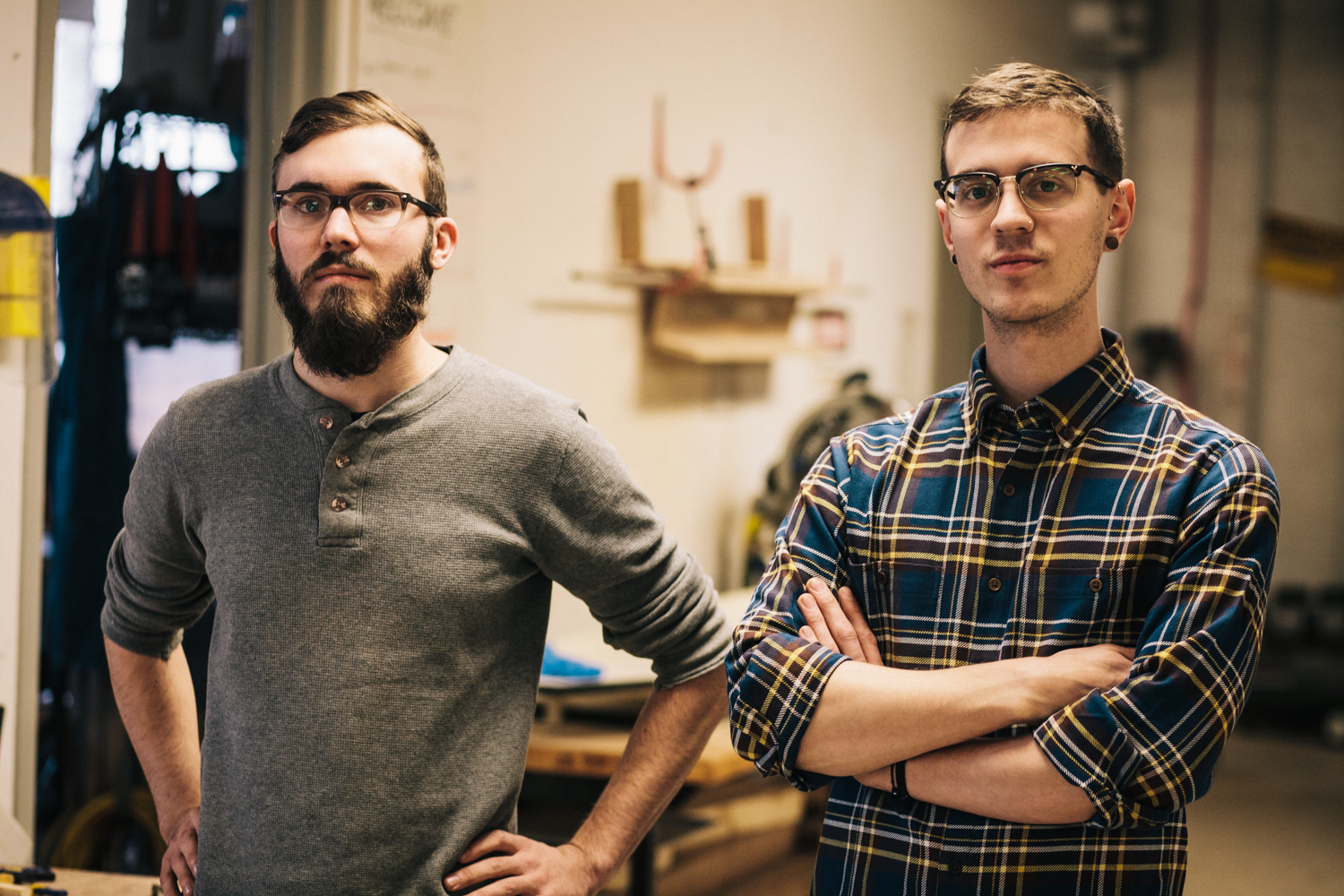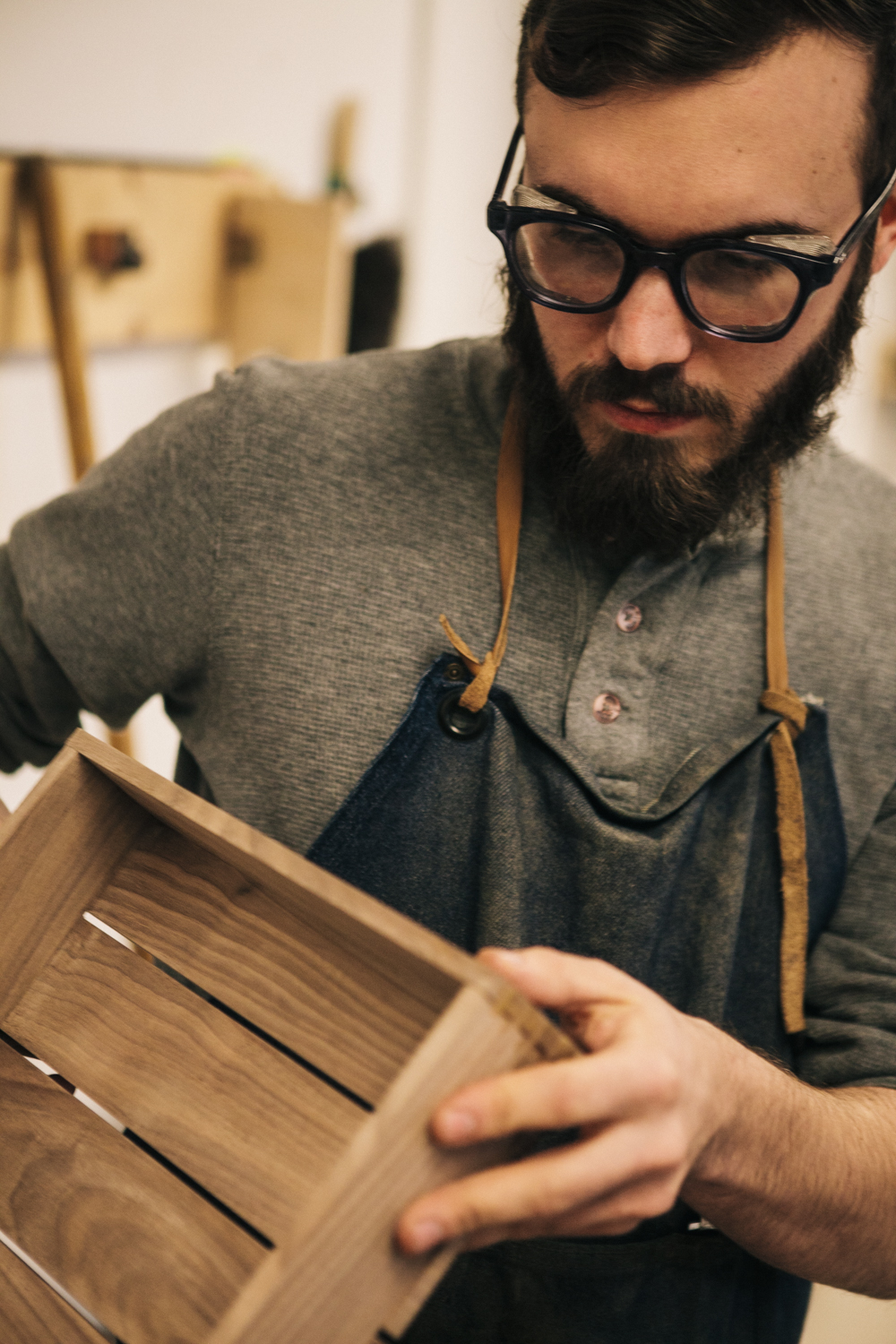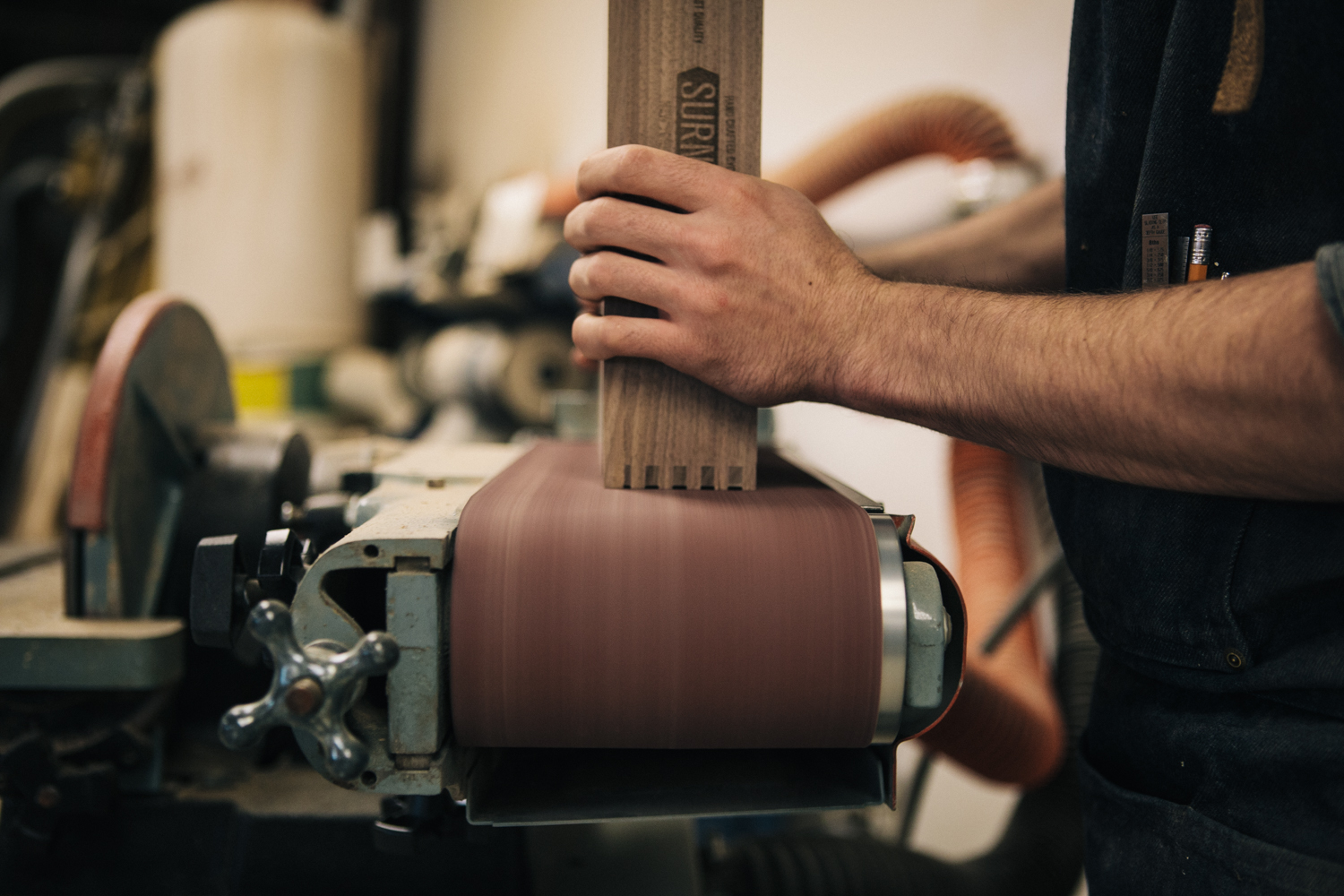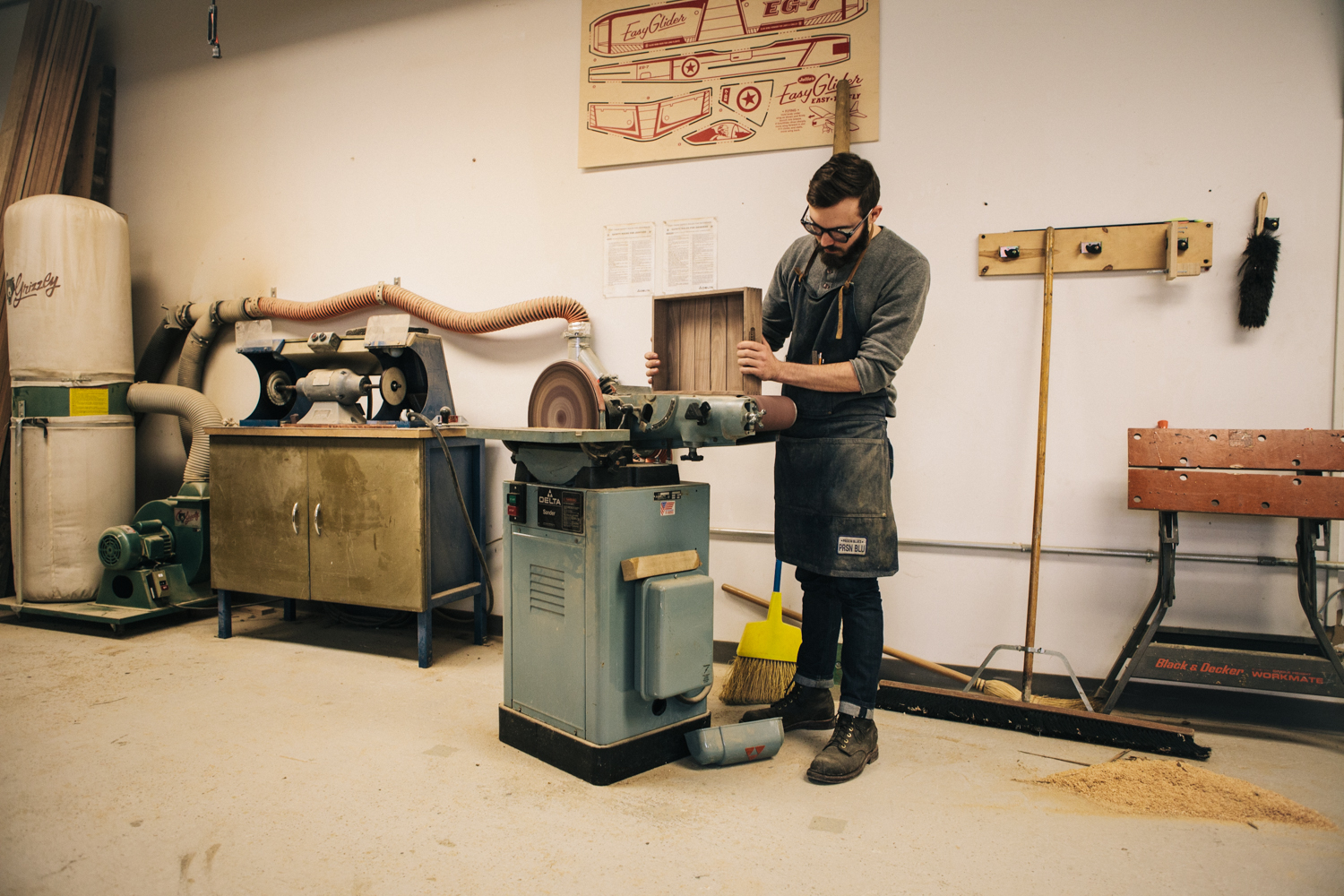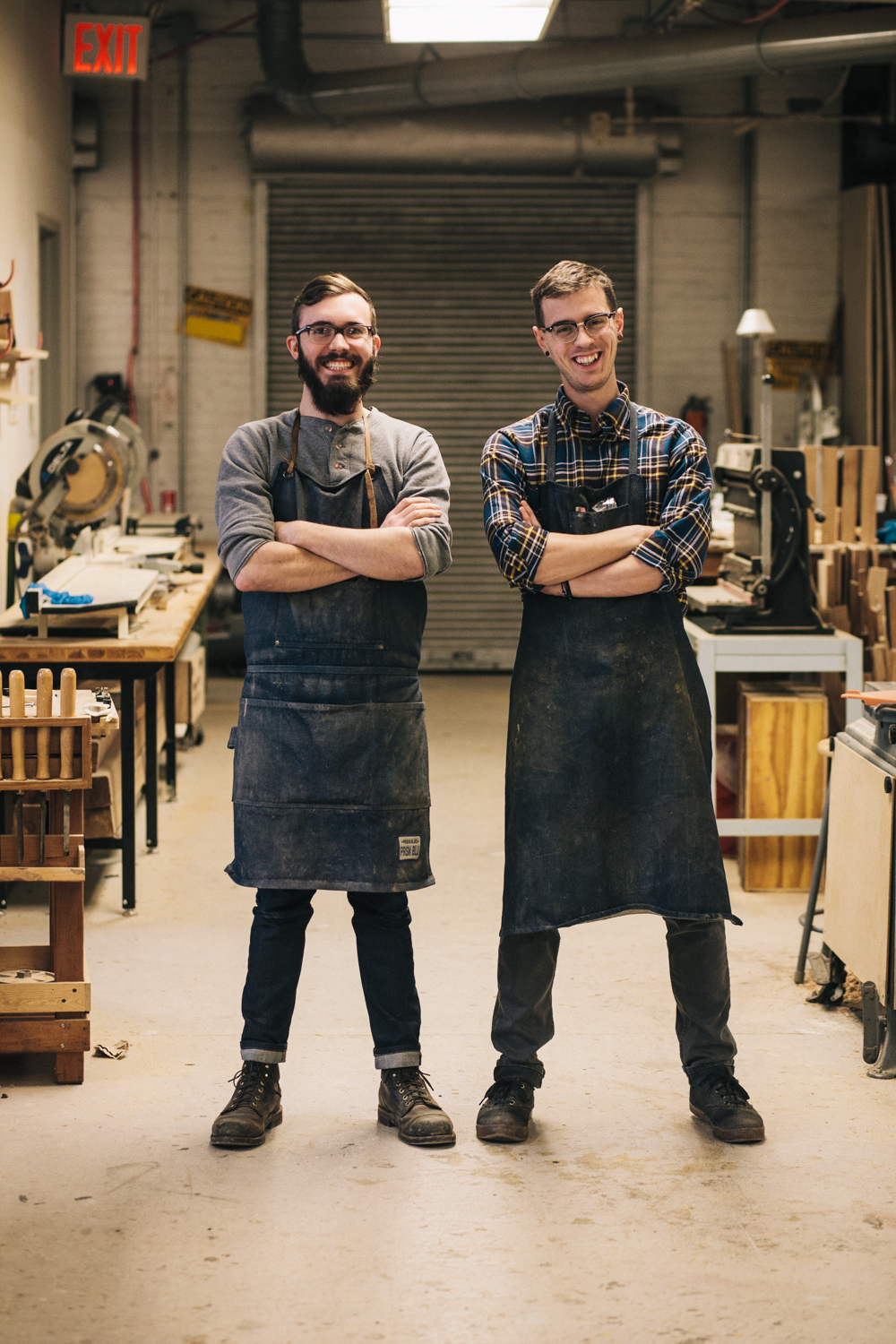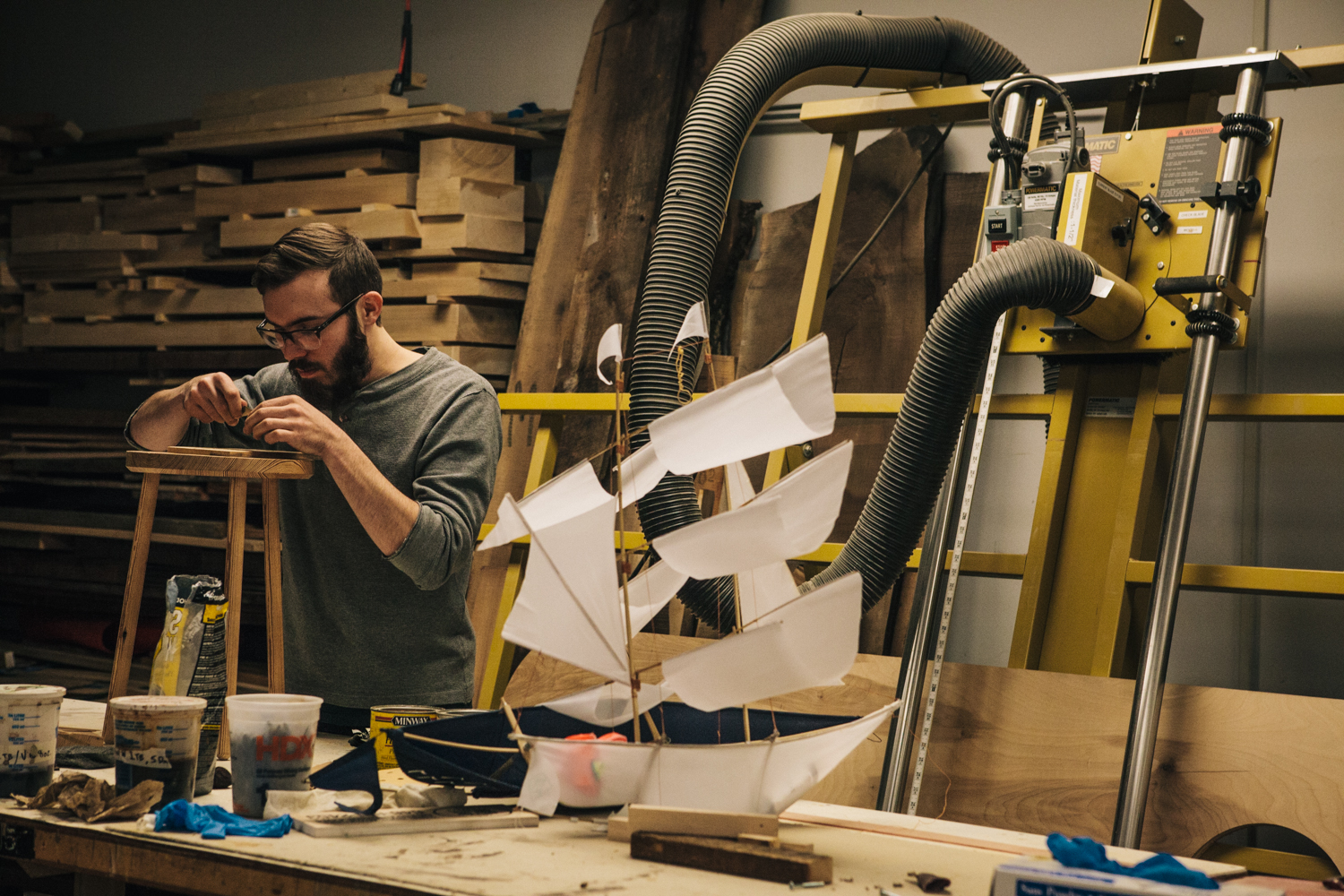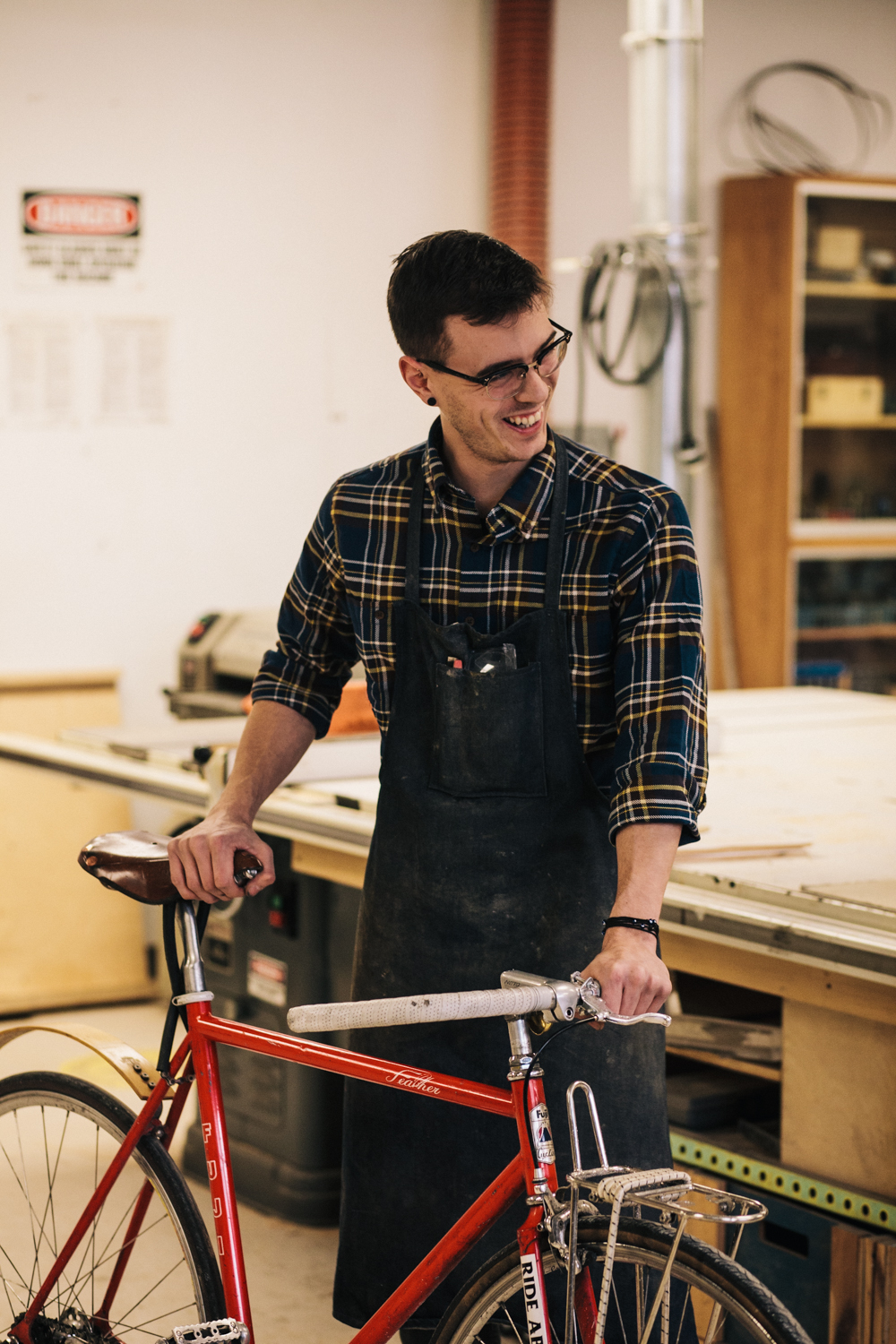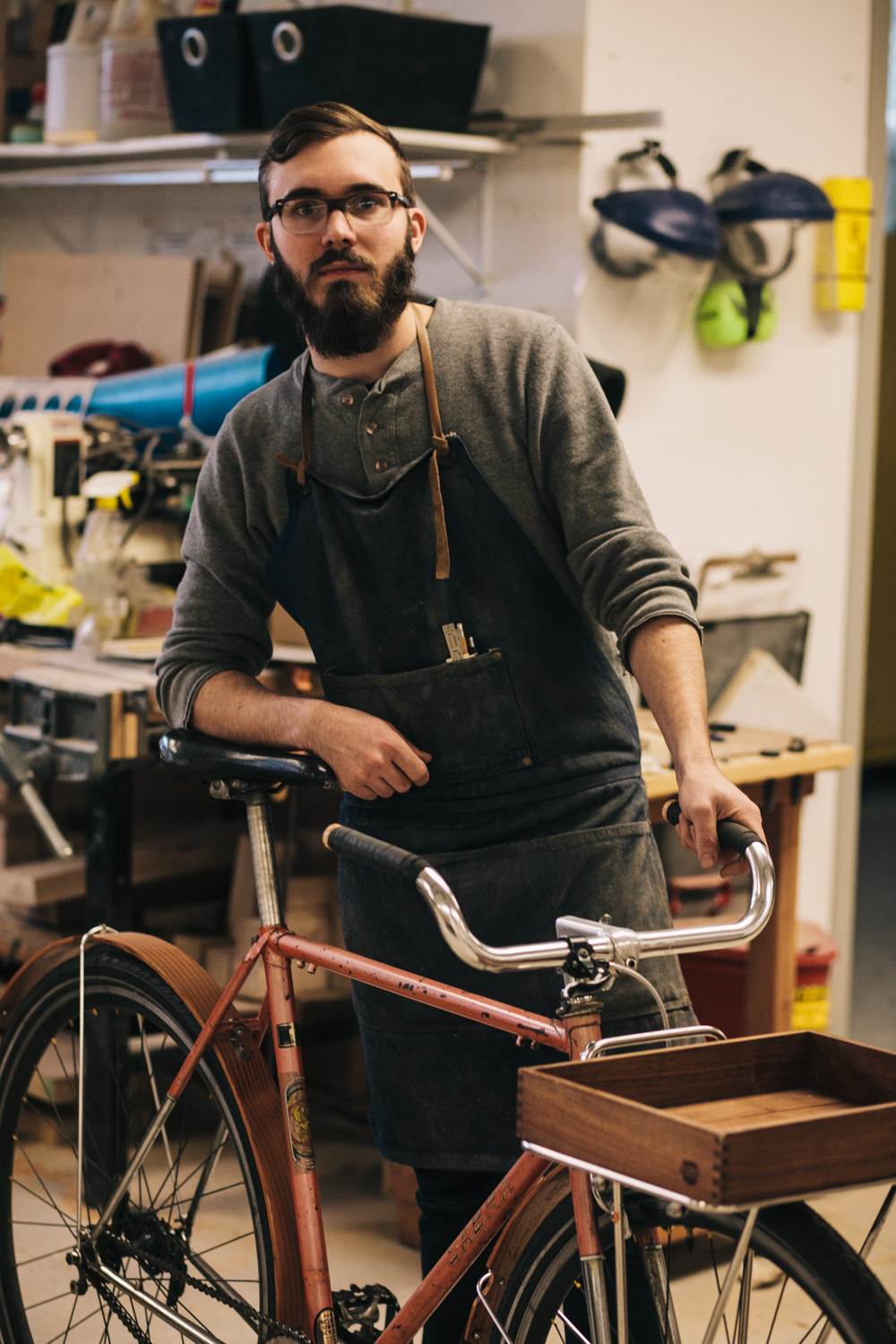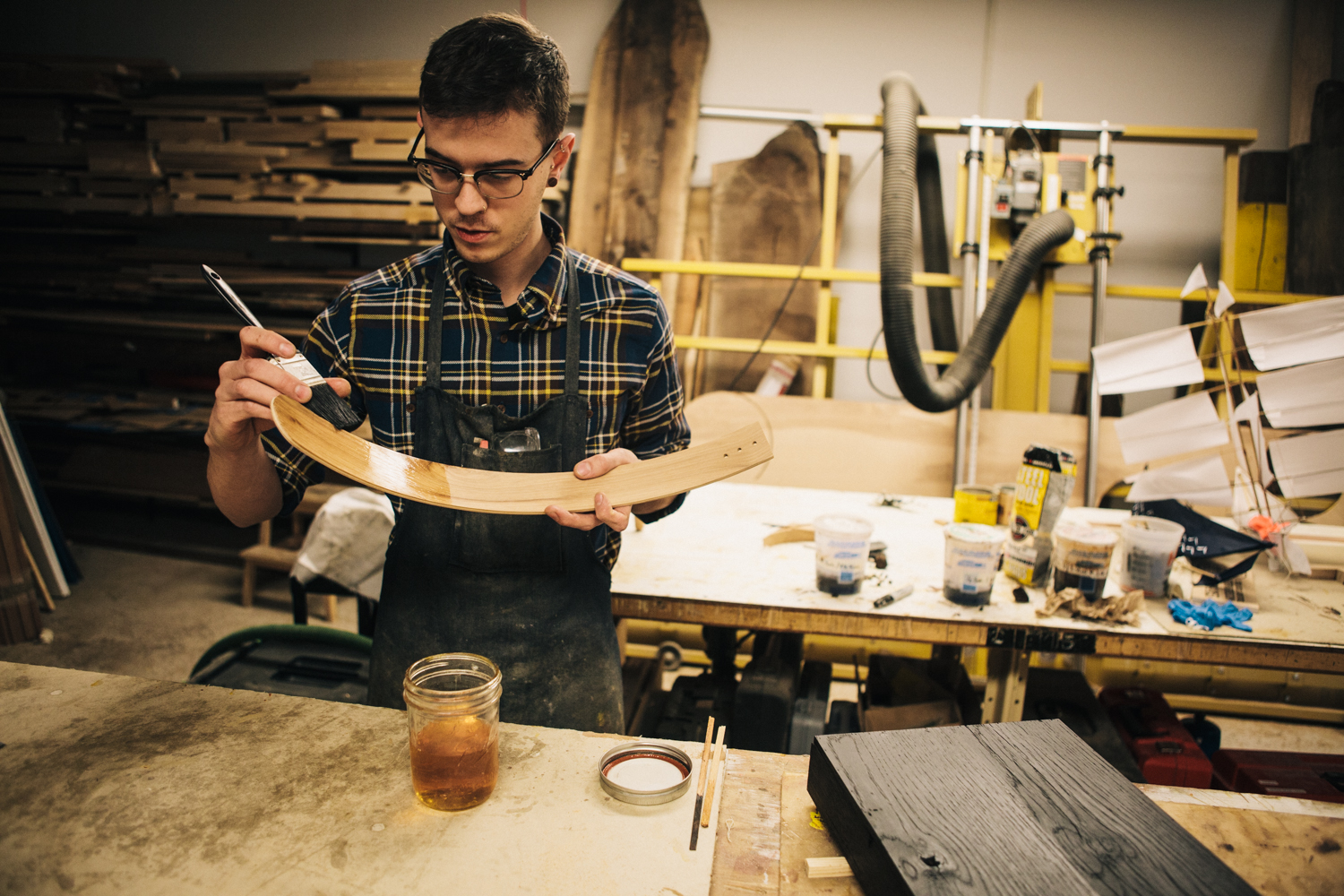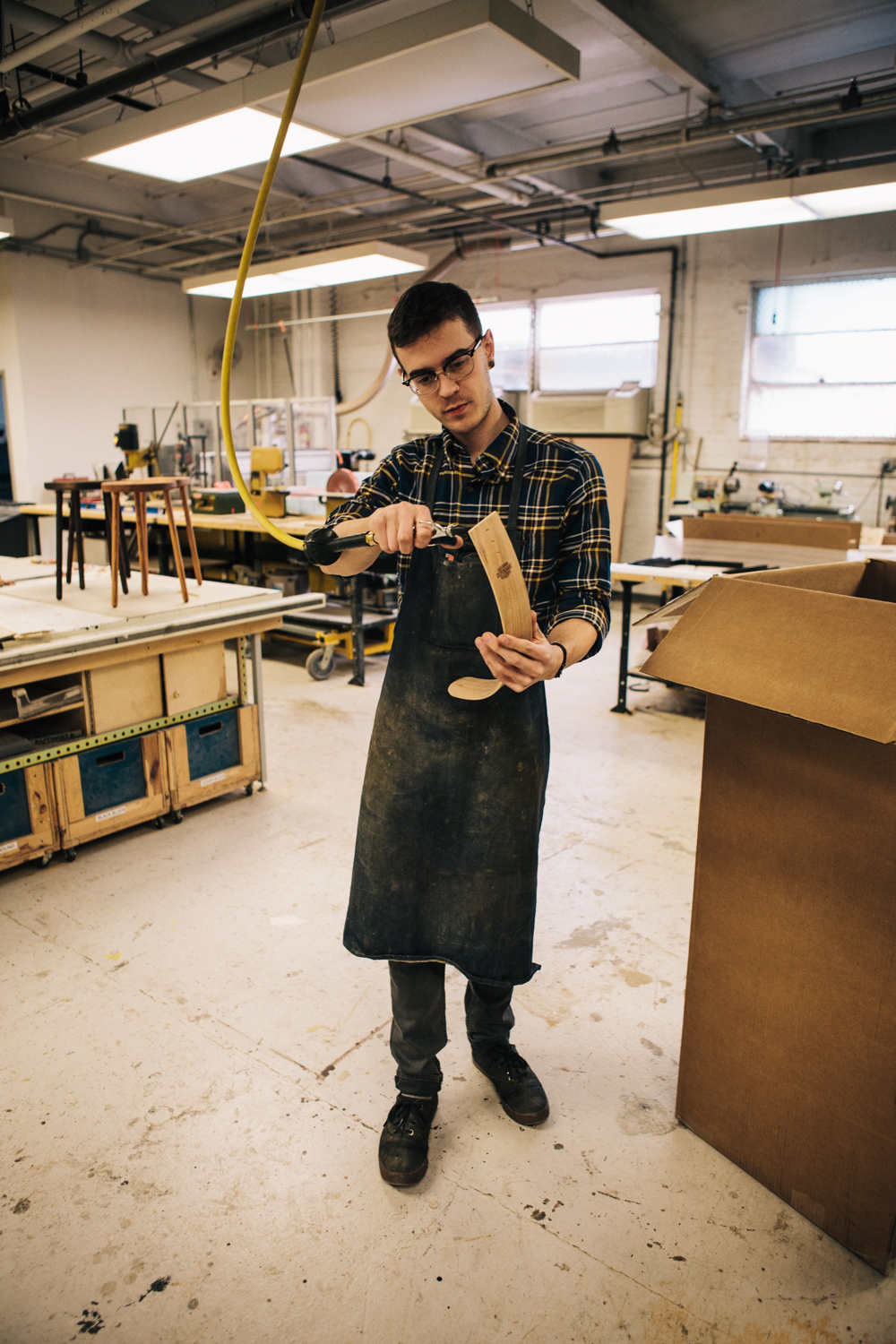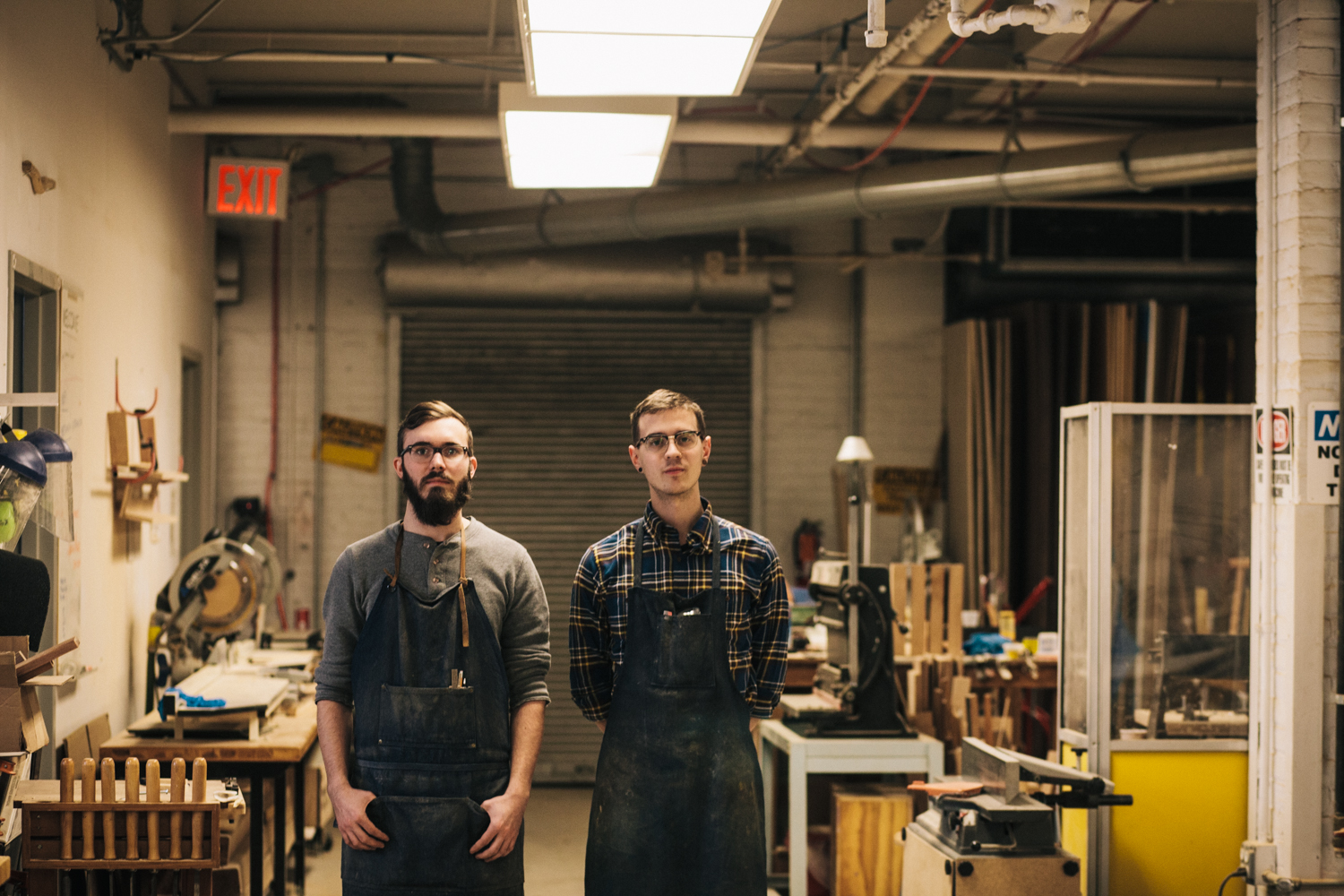January 31, 2014
Bike New Yorker #4: Steve Bukowski and Timothy Skehan
We talked to the founders of Surname Cycling Co. about why their wooden bike accessories, handcrafted in Queens, are in such high demand.
Interview and photographs by Sam Polcer. You can see more of his bike portraits at Preferred Mode.
Let’s go back to before you started making custom wooden bike accessories. When and where did you guys meet?
Timothy Skeehan: We went to school together at the Cleveland Institute of Art.
Steve Bukowski: We graduated in 2010. We lived in the dorms together.
Were you both interested in design and woodworking?
SB: I had worked in the shop a lot because I was a design student. I did a lot of prototyping, just kind of getting a feel for things in there.
TS: I studied photography. But I always did little projects in the wood shop, building frames, bookcases, and other various things.
When and why did you decide to go into business together?
TS: I was egregiously under-employed. And Steve was not so into his job.
SB: I was doing ceramics for a while, which I still really enjoy, but I didn’t want to make a career out of it. And working for someone else, I wasn’t getting the freedom to design and make what I wanted to make.
TS: So we started working out of my basement in Bushwick, kind of playing around with ideas for what we could do to start a business. It was always based around design. We found these little do-it-yourself CNC (Computer Numeric Control) routers. The first one was the DIYLILCNC, and the one that we’re keeping is called Zenbot. That was the spark. We were tinkering with those, seeing if we could make something of it, and started getting some woodworking equipment down there, which was useful for the process. Eventually we ended up revisiting a design Steve had done for some wooden fenders while we were in school.
SB: Just for fun.
TS: At first. And then were like, “maybe we can make something around this.” So we started doing the fenders, and that’s when we started building up the Surname brand.
I assume you were already interested in cycling.
SB: In our junior year of college we both really got into bikes, mainly because getting around Cleveland without a car sucks. Their transit system isn’t that great.
TS: It’s terrible.
SB: And Cleveland is pretty flat overall, so the cycling is easy.
TS: And bikes are cheap. I bought my first bike in Cleveland, a Schwinn Le Tour Luxe in, like, perfect condition, for 90 bucks from an art gallery.
SB: It was really affordable to buy a bunch of bikes and strip them down, rebuild them, paint them, customize them, and just have a lot of fun with them. We had an apartment together in New York, too. We turned our basement into a bike workshop. We were using a painting easel as a frame stand.
TS: We’ve been basement tinkerers for a long time.
What were your first impressions of each other?
SB: I didn’t care for Tim. To put it nicely.
Did that go both ways?
TS: I was indifferent, mostly. Steve is introverted and quiet.
SB: He was too loud for me. I was like, “Who is this guy?”
TS: We didn’t mesh that much until he started dating my best friend.
SB: Who I’m going to marry.
Well, that worked out. And I guess that dynamic works well in a business partnership.
SB: Yeah. I think our strengths and weaknesses are balanced out pretty well.
TS: I’m the more extroverted, business-y one, and Steve’s the mad genius who’s in here tinkering and figuring everything out.
What kinds of bikes do you ride?
SB: There are two bikes that I ride frequently. The one I have set up is a light touring/commuter. It’s a Surly Cross-Check. I put some fenders on it that we made out of hickory. And the other one is a fixed IRO.
TS: My day-to-day is a Fuji fixed that’s set up in kind of a funny configuration, with some Velo-Orange handlebars that often get people asking questions, which is kind of fun. And I’m setting up a light tourer that’s a Soma San Marcos.
Can you explain the name of your brand?
SB: It’s a conceit based off the fact that many well-respected cycling brands have family names associated with them, whether they’re Brooks, Raleigh or Cinelli. Really nice brands. But we didn’t feel like our names lent themselves to that.
TS: “Bukowski Cycling.” Sounds like a DUI.
SB: Yeah, so we just thought of Surname, and figured we’d change it eventually. We just needed to use something, but it just kind of stuck, so we left it.
It’s like “Brand X” with panache.
TS: It was definitely a “we’re going to change it later” thing, and then we did all this graphic design around it. It was our Lorem ipsum for a minute. And then we started to like it.
Where do you get the wood that you use? Each piece looks slightly different.
SB: A couple different places. We go to Build It Green. They have a lot of great reclaimed and re-use materials. A lot of big joists; a lot of that stuff is old growth pine and spruce. The wood is incredibly dense and more stable than wood you can buy at the store.
Does that make it harder to work with?
SB: Sometimes you have to de-nail a lot of things, which can be really time consuming and frustrating, but I think it’s worth it. We also get wood from Roger at Re-Co Bklyn, which is across the street from the old 3rd Ward. They get trees from the city that they would normally chip; the ones that have fallen down or have to be taken down for some reason. They mill the trees down into lumber and then dry them in a homemade kiln.
So you’re making New York City bike products out of New York City wood.
SB: Exactly.
TS: We’ve even been able to get Coney Island Boardwalk wood in some pretty ridiculous dimensions from another place called M. Fine Lumber Company, which is a longstanding reclaim yard over in Bushwick. Like, the actual joists that held up the boardwalk. It’s all ipê, which is a rainforest wood that’s not legal to fell anymore.
That must be popular.
TS: Yeah. We really try to get those kinds of woods. They’re always in high demand when they come around. There’s a few places where you can get that Coney Island ipê, and there’s cedar and redwood that come from old water towers that get stripped down, which are also both really fun woods to work with. They’re both really light, so they’re great for what we’re doing. And that backstory is amazing. Pretty much any reclaimed wood you can get has some kind of backstory. But people get so excited about the stuff from Coney Island.
SB: Everybody wants that.
Is there a benefit to making bike accessories out of wood?
SB: It looks nicer.
TS: It’s mostly aesthetic, to be honest. And you know where it’s coming from. Aside from your few bespoke builders, you’re really not going to find somebody making metal parts locally. You can’t get reclaimed steel in quantity. The ethics of it are better.
Do you get special requests?
SB: Just the other day, this guy was like, “I really like your box. Can you make me one with the same footprint, but taller?” For the full fenders, they all have to be custom sized, so customers have to bring their bike in, or we have to go to them, and measure and mark on the fenders where we need to cut it, in order for it to fit through the brakes, or into the stays or whatever. But we do have a fastback fender that mounts to the bridge that’ll fit on virtually any bike.
Who’s your typical customer?
TS: We’ve been working with a lot of builders, like Horse Cycles. It’s really a blast to work with Thomas. We did this really big version of that box for this specific bike he was building, and that’s really great, because it’s this whole collaborative process to make something really special for this custom bike that’s going out to a customer who’s getting exactly what they want. We’re going to have stuff soon at 718 Cyclery, and that’s a similar thing. They’re not doing custom frames, but they are doing custom builds. Giving people exactly what they want is really fun.
Is that the trajectory now, to work with businesses and reach customers that way?
TS: Yeah, and we sell online in a couple places, but it’s more satisfying to work with the local businesses. That’s what we’re all about: Keeping things ethical, sustainable, and local. Forging those relationships fits all of those things.


